Chris Parkin offers a fantastically comprehensive overview of scope mechanics and adjustment - this month’s Tech Talk is riflescope turrets!
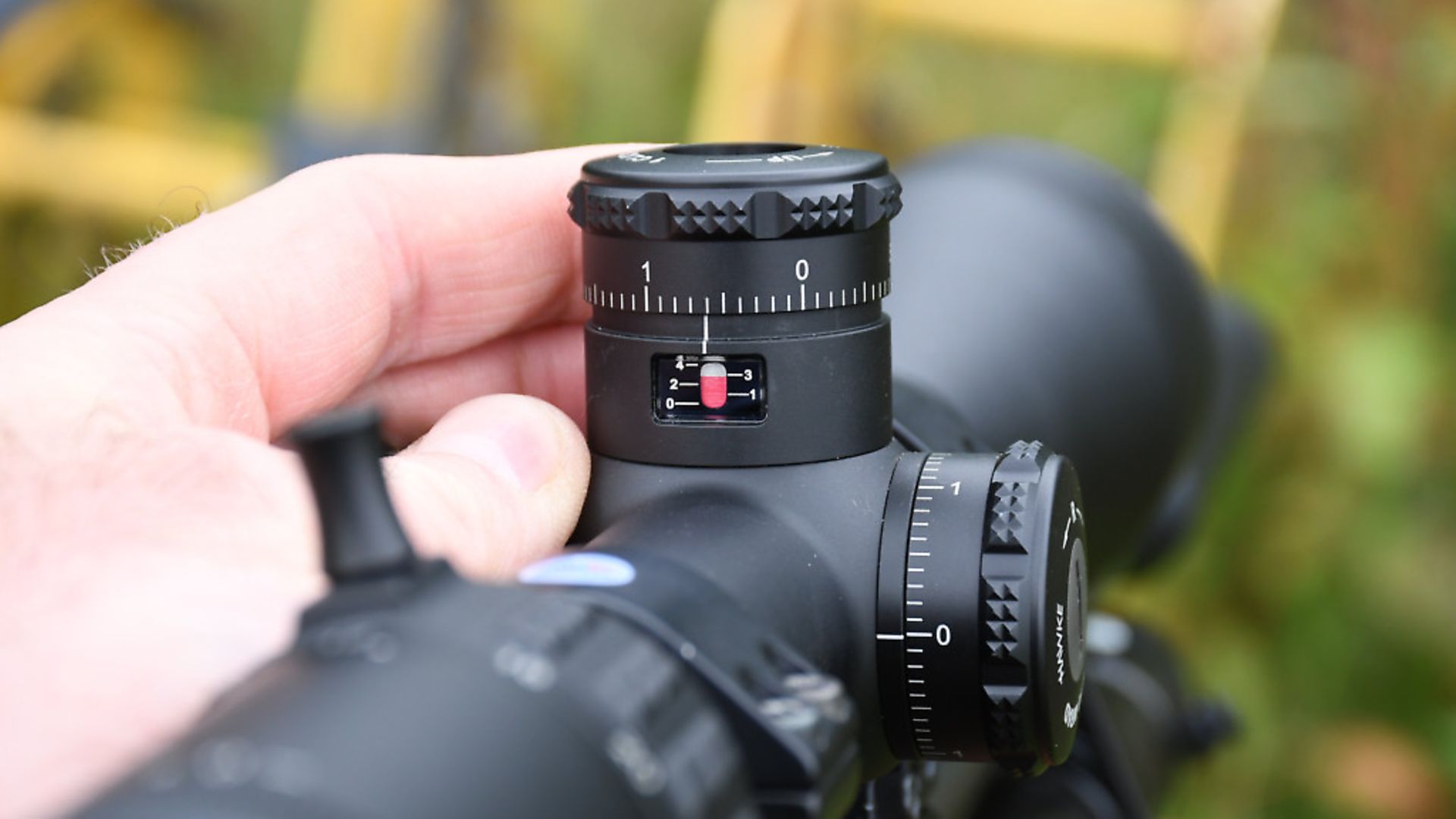 credit: Archant
credit: Archant
After looking at a wide array of dials last month, turrets become the subject matter this month. Early riflescopes were designed for a single point of impact at a set distance, with additional holdover applied by the shooter to compensate for extended range. Improved mechanics have now led us to dial in these corrections with our fingertips or indeed our whole hand.
The simplest turrets have a taller profile (still under a cap with a vernier-type scale to indicate rotation), individual clicks and entire minutes of angle or milliradians available within the scope’s calibrated range. The two formats – Mil or MOA – are just basic angular measurements. Ultimately, it comes down to personal preference. It’s just like choosing between metres or yards: there’s no right or wrong.
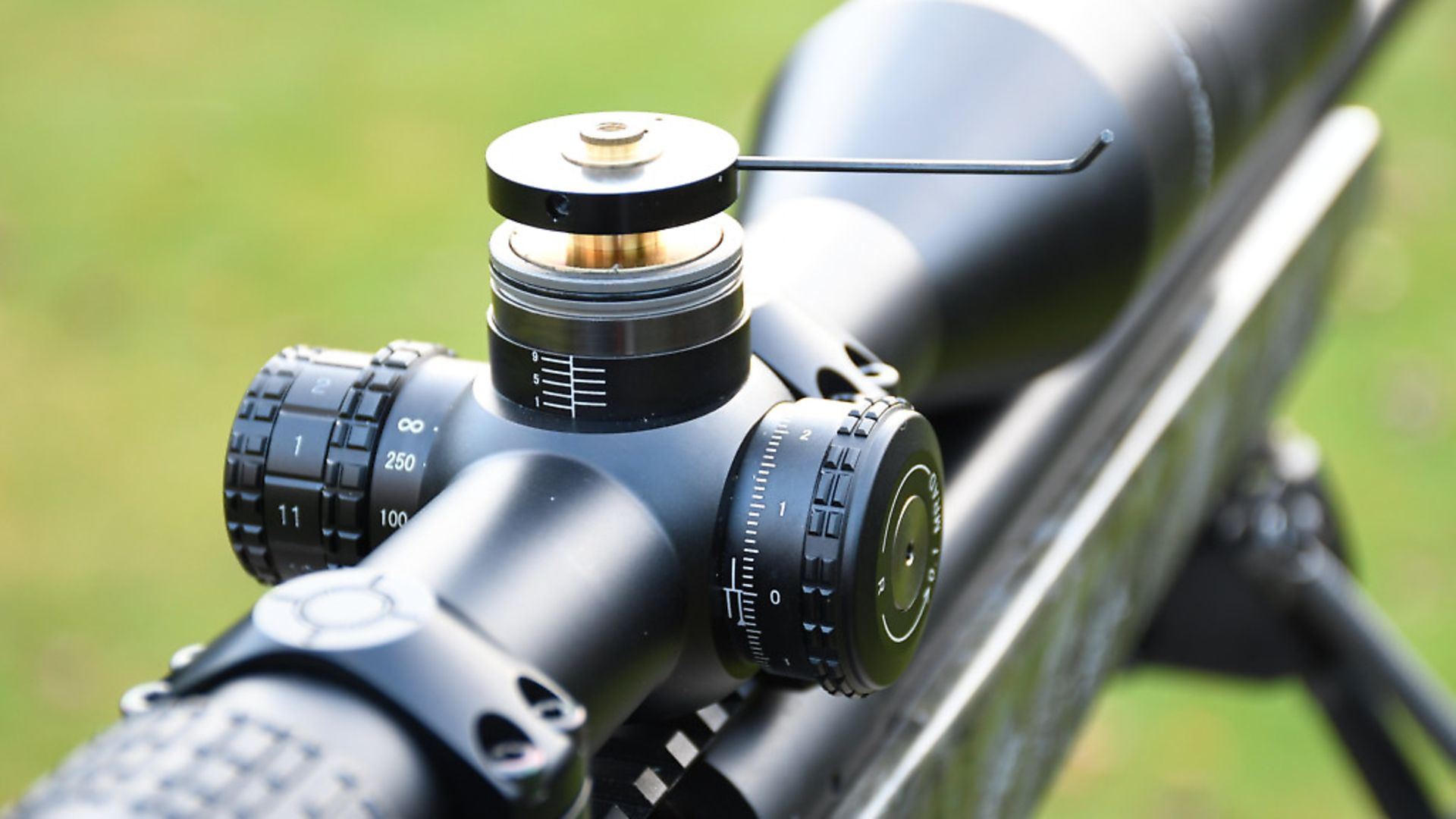 credit: Archant
credit: Archant
Vernier scales
The vernier element [IMAGE 01] of the scale enables you to count the number of turns wound up or down from zero. Most types can be loosened from the inner mechanics and rotated freely to align the zero mark on the turret with your chosen zero range. Allen-head grub screws are usually the choice here. And with them loosened off, you won’t generally hear or feel any clicks when turned.
 credit: Archant
credit: Archant
Enclosing the turret
The next step is to fully enclose the turret so it is externally adjustable, with no removable parts. The Hawke Sidewinder [IMAGE 02] shows external machining for grip, as well as an innovative red marker (witness window) moving up and down to indicate where within the scope’s travel the elevation is currently set. The external markings can be loosed and reset to indicate zero, after having been set up on the rifle.
 credit: Archant
credit: Archant
Zero stops
Zero stops are a subject in themselves. But essentially, once set up (as per the procedure listed in your scope’s instructions), they prevent the turret being dialled below zero. So, if you set them up at 100m and then dial on 23 clicks up to take a longer shot, all you have to do is spin the turret back to the stop to return to your initial zero. There is no possibility of getting lost if you miscount the number of clicks, or even whole turns, that you’d dialled on for the longer shot.
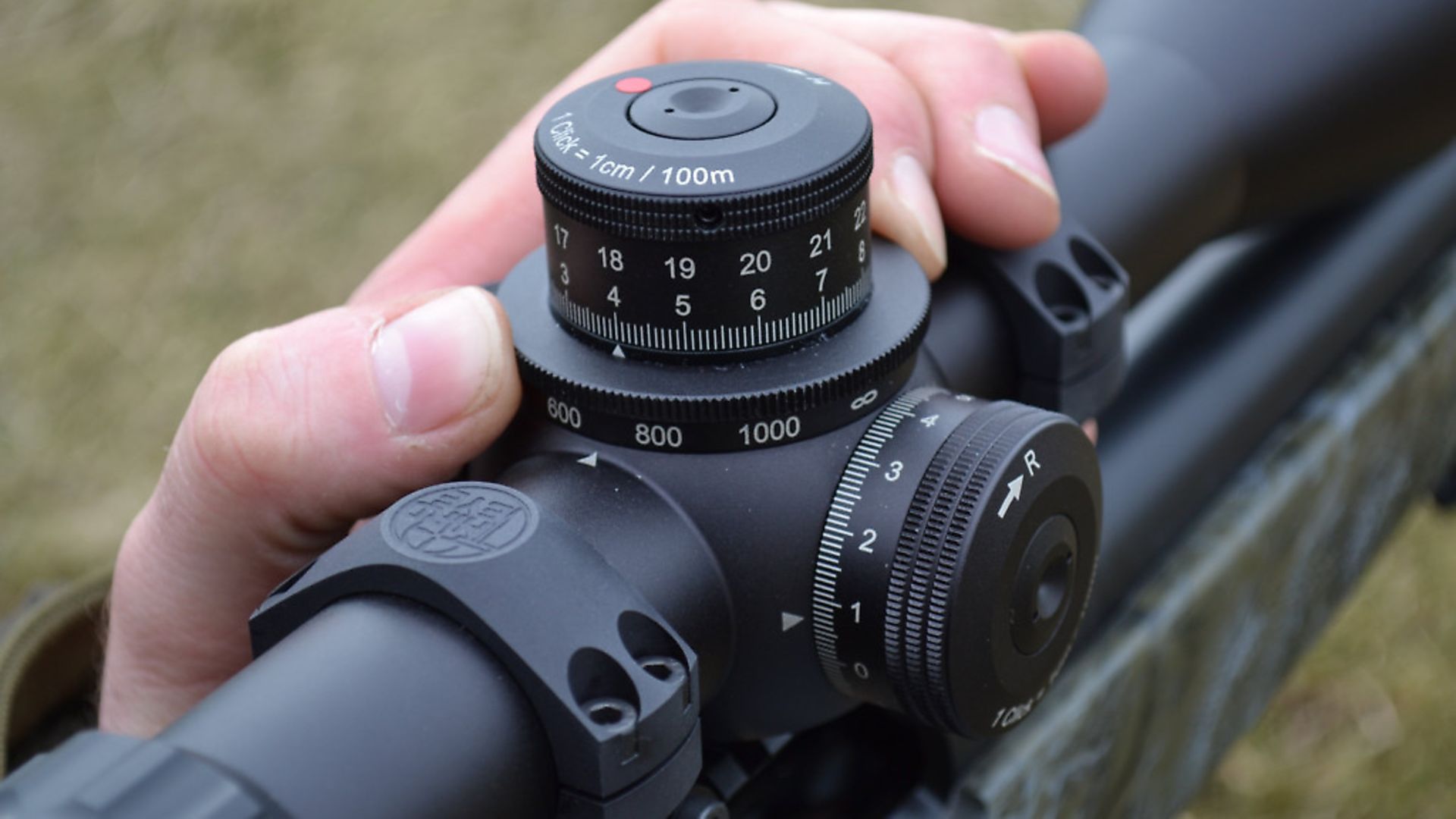 credit: Archant
credit: Archant
Plain & simple
In its simplest form, the turret’s upper cap is removed, exposing a brass ring [IMAGE 03] with additional grub screws, which essentially butts up to the turret’s inner workings, stopping it from going beyond zero. As the price increases, so does mechanical complication, and in the pricier models this can be done for you. But sometimes, simplicity can be beneficial – especially if extra tools are required or tiny components need removing.
This Zeiss turret [IMAGE 04] offers a locking outer dial that physically lifts it away from the scope’s body to rotate. This is limited to a single rotation to further decrease the chance of getting lost in the scope’s mechanical range.
Setting it up can be more complex, and its extreme range is usually limited by the external turret’s single rotation design, rather than by the physical limits of the internal erector tube’s movement within the main tube. This type of turret is most commonly associated with premium hunting scopes, which is why the turret’s outer perimeter markings are sometimes available with factory-calculated ballistic solutions for long-range shooting.
There may be the possibility of having them custom-engraved to suit your rifle’s exact ballistics, which is superb for fast adjustment at short- to medium-range. However, any external factor altering your ammunition’s trajectory renders the markings incorrect, so I prefer to calculate, test and create my own distance marks on the dial.
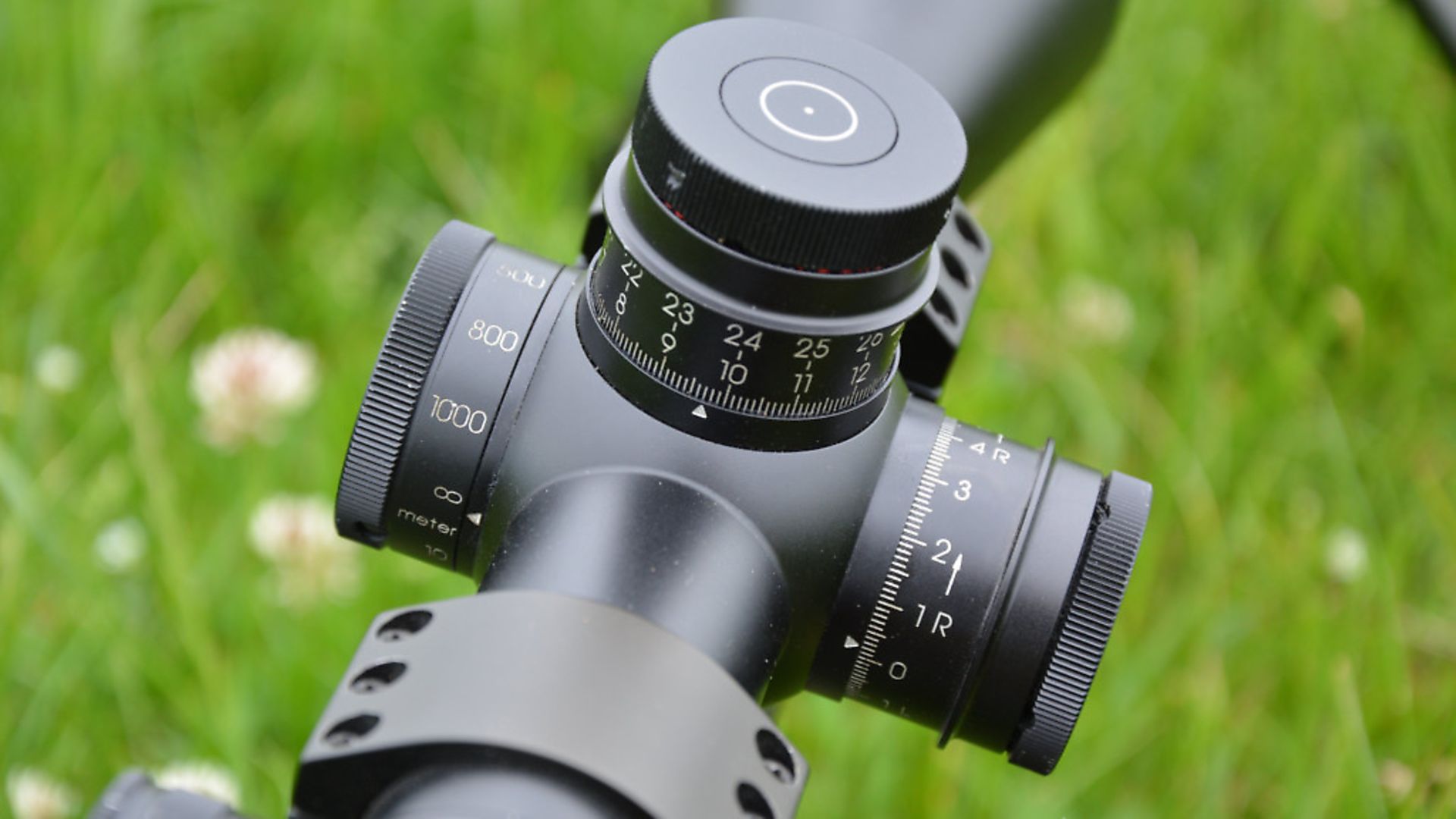 credit: Archant
credit: Archant
The extreme & unusual
The Schmidt & Bender STII-B turret [IMAGE 05] is an extreme hunting scope with six individual distance markers that can be set as desired.
The Kahles 624i [IMAGE 06] has some unusual design traits. For example, the parallax adjuster surrounds the elevation turret and, more unusual still, sees the appearance of a second turn indicator. This is the small red flush-fitting stub atop the turret which pops up to offer a visual and physical reference when winding beyond the first rotation of elevation. For longer distances, you read off the top row of numbers from 15 mRad onwards. For example, a rifle in .22 LR, zeroed at 50m, would need to dial on to the second turn in order to make shots at 300m.
 credit: Archant
credit: Archant
A vote for complexity
Variety is the spice of life, which brings us on to this Schmidt & Bender. IMAGE 07 shows its lifting locking collar, which still allows for alteration but provides a secure setting, avoiding the chance of any accidental changes being applied.
The Swarovski X5 scope shows incredible turret complexity, requiring special tools [IMAGE 08] for setting up their multi-turn turret with a zero stop.
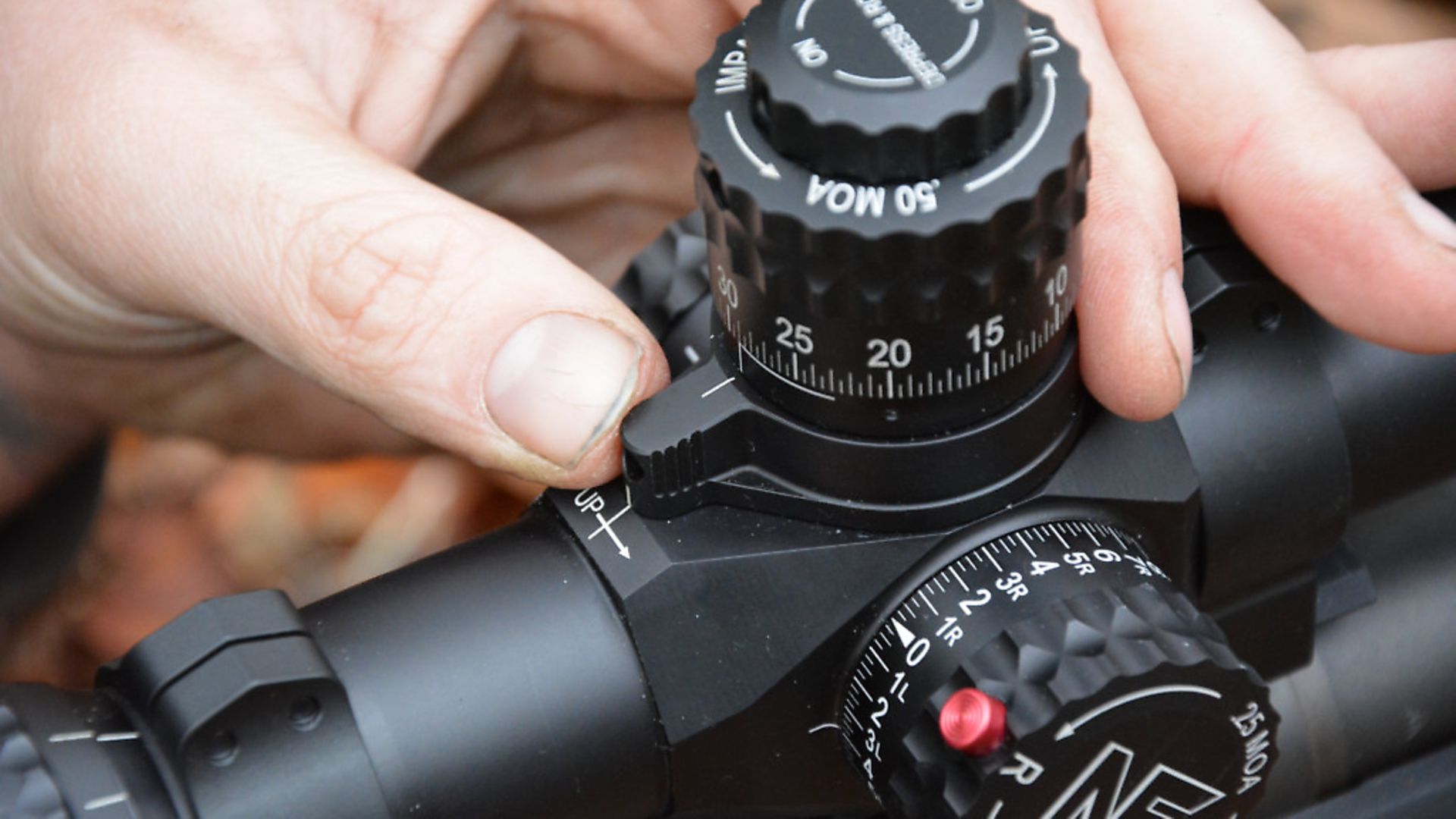 credit: Archant
credit: Archant
The wild card
Perhaps the most unusual is the Nightforce B.E.A.S.T. [IMAGE 09] which has a turret dialling in larger ½ MOA increments, with an additional lever to make ¼ MOA alterations either side of that initial setting.
Also, take note of the red windage locking button. The KISS principle seems to have been a little lost in this case.
Conclusion
Essentially, most designs strive to offer ease of use in the field while providing the greatest amount of travel for longer-range dialling. Turrets get large to provide a wider circumference, resulting in wider spacing for individual clicks. A small ball bearing on the tip of a spring has to lock in to each detent as you spin the turret through what may be 150 clicks for each turn. The greater the space, the more tactile the click. When the detents get too close, the feel of the clicks becomes mushier. The same can be said for the size and clarity of the engraved markings.
Like so many things in shooting, more money equals more possibilities – but beware gimmicks that add to the cost, but offer little in added functionality.